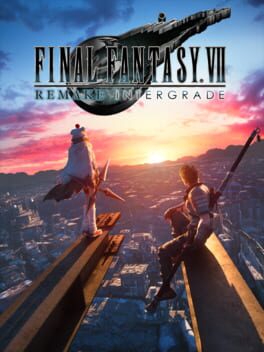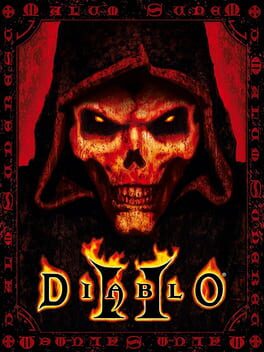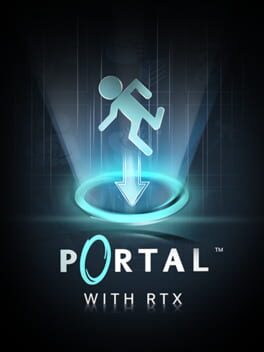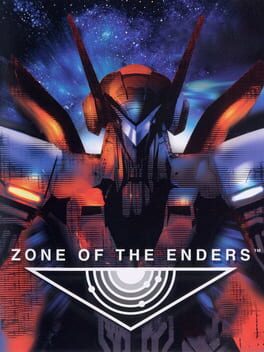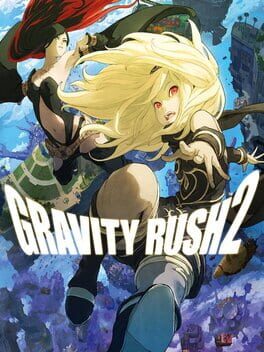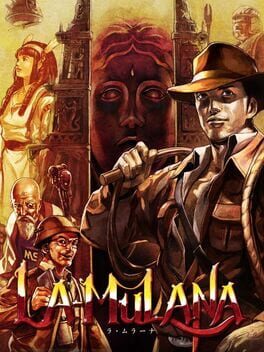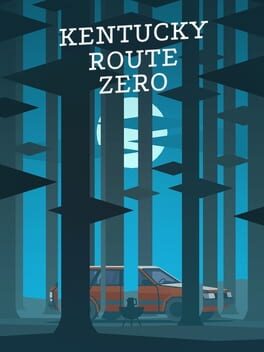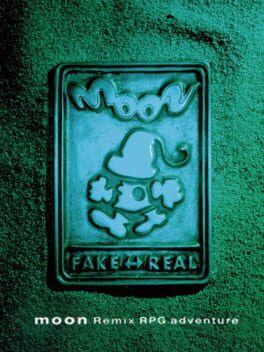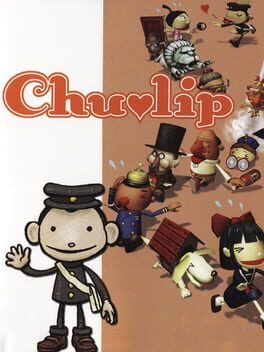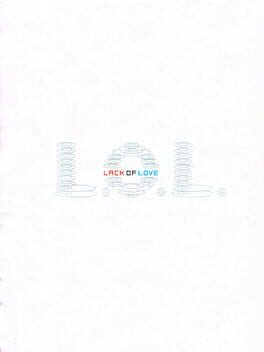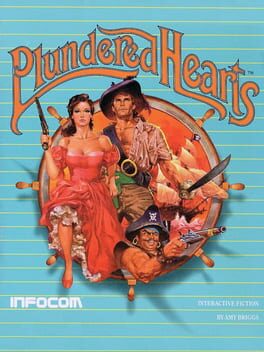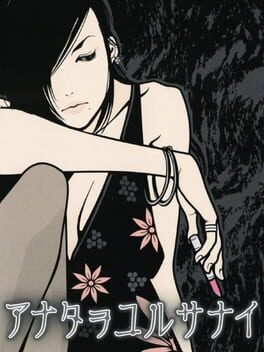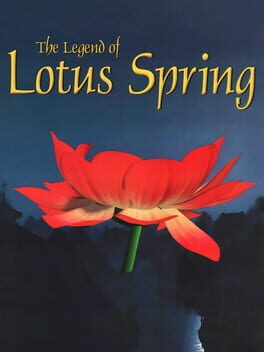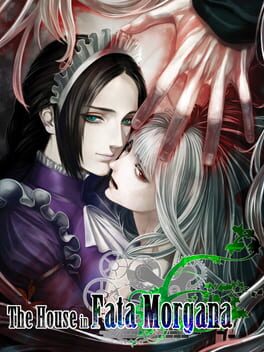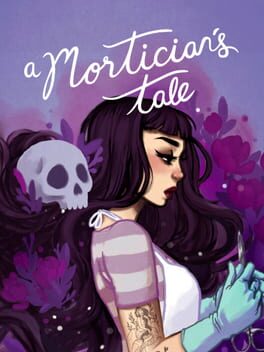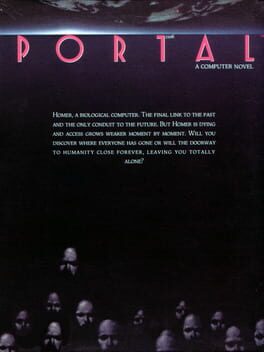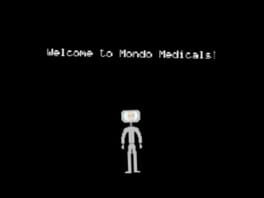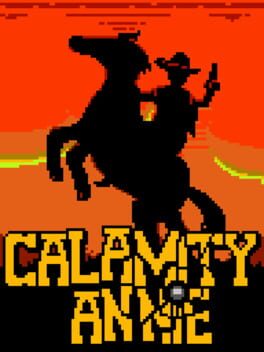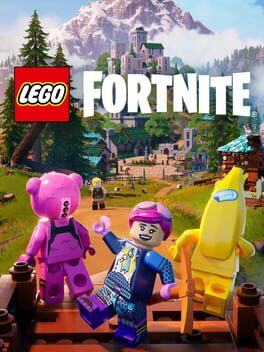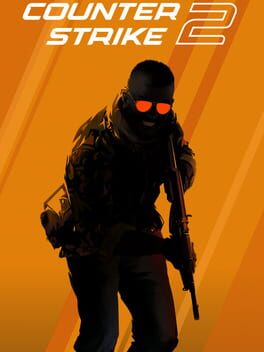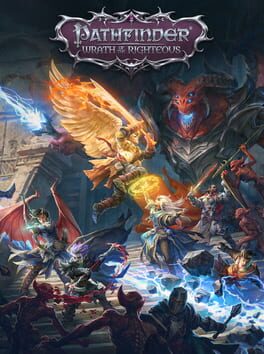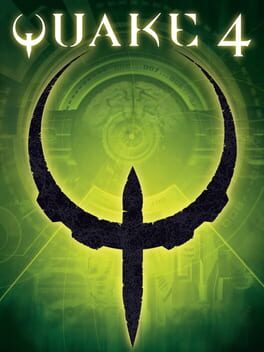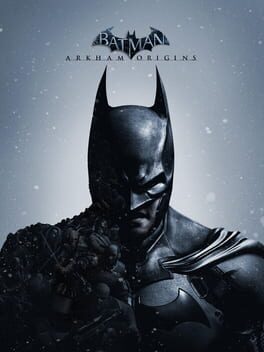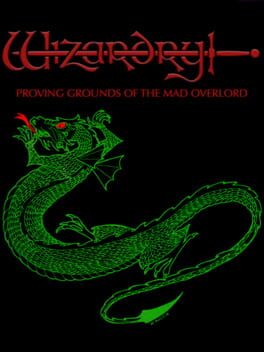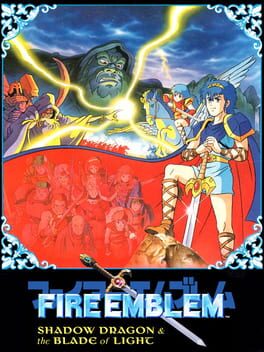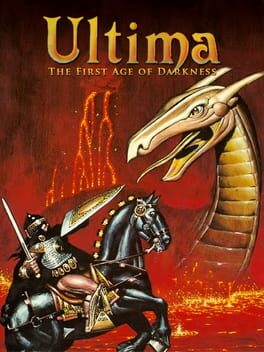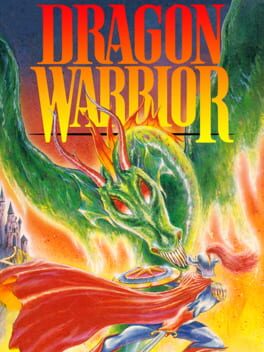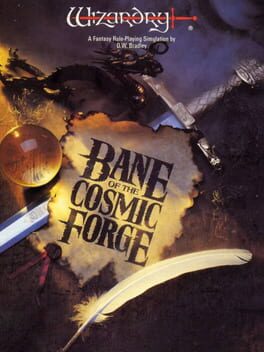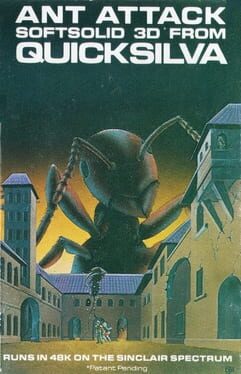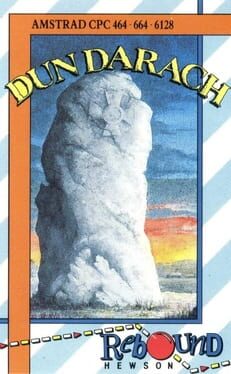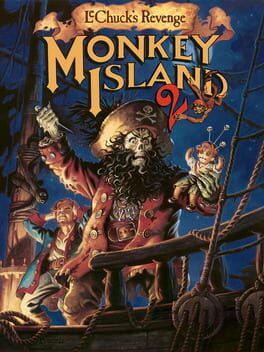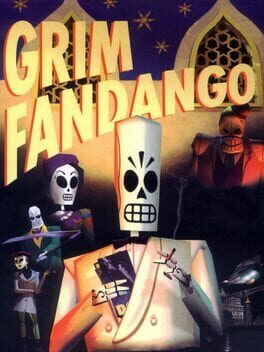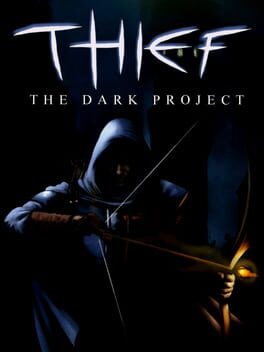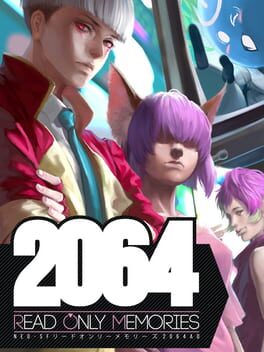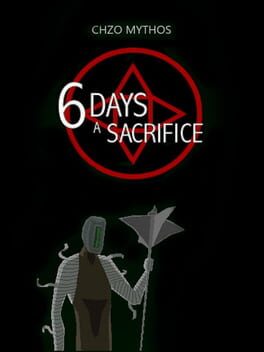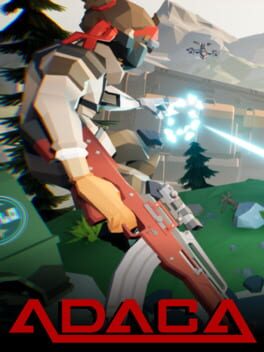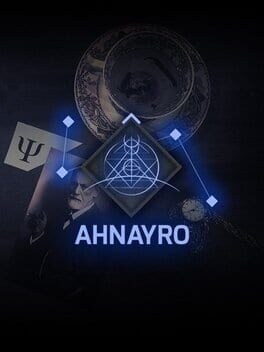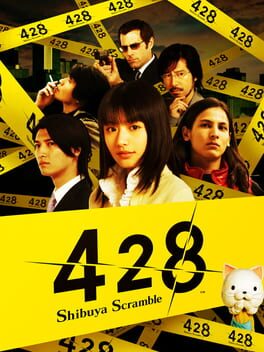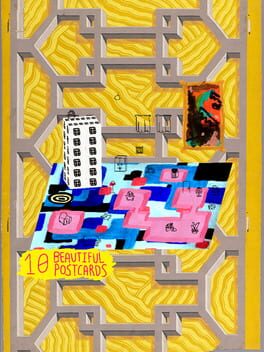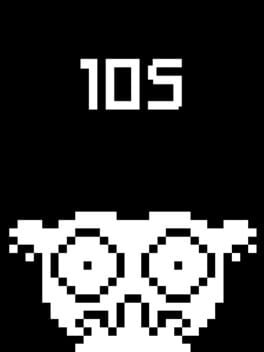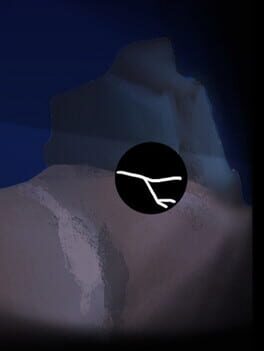mintcastle
74 reviews liked by mintcastle
Smarty
1996
this and a blunt but no seriously this and a blunt
rlly lovely game :-))
in love w theresa duncan’s vision and idea of a middle america, a place innocent but not and a place that’s somehow both mundane and extravagant. I think she hoped for a better world for future generations :-) I think that’s sweet :3
highly recommend looking at her blog @ https://theresalduncan.typepad.com/witostaircase/
spent a few hours on there last night and there’s some rlly great musings and photo curation from her if u even slightly gaf about fashion/feminism/art/celebrity/conspiracy etc etc
rlly lovely game :-))
in love w theresa duncan’s vision and idea of a middle america, a place innocent but not and a place that’s somehow both mundane and extravagant. I think she hoped for a better world for future generations :-) I think that’s sweet :3
highly recommend looking at her blog @ https://theresalduncan.typepad.com/witostaircase/
spent a few hours on there last night and there’s some rlly great musings and photo curation from her if u even slightly gaf about fashion/feminism/art/celebrity/conspiracy etc etc
Hollow Knight
2017
When I first tried Hollow Knight five years ago, I bounced off it hard. I had not yet known the sweet embrace of Dark Souls. Although I did enjoy a platformer and the occasional metroidvania, the rhythm of this game's combat did not match the beat of my heart, nor did its by-the-book early traversal quicken my pulse. I didn't make it deep enough to even begin to meet the dramatis personae. I just set it down intending never to pick it back up.
That same heart, in the intervening years, grew to love From Software's oeuvre. This love has much to do with why I did eventually return, although not perhaps for the reasons you'd expect. Although Hollow Knight borrows some formal aspects from those games, most notably the bench/shade mechanic and a preoccupation with boss fights, it is on the whole more different than it is similar. And every time I've tried to dip my toe into a game because it's "like Dark Souls", I've walked away shaking my head and mourning designers' inability to learn the right lessons. That was never going to be my reason for playing this.
To understand the true reason, you must first understand what happened after FromSoft stole my heart. I played through all the games in reverse, from Sekiro to Demon's Souls, then wept for there were no more worlds to conquer. But to my friends, these paths were as yet untrodden. I would tune into their streams in vicarious delight as they first saw sights that I now knew so well. And on rare and precious occasion, a friend would ask me to take their hand and guide them through a game entire, the voice in their ear every step of the way.
I joined the journey of one friend in particular through Lordran, from believing these games were fundamentally Too Hard for them to beating the DLC bosses so fast it put the sickest Os in the group chat to shame. Playing together as learner and guide made us better friends and gave them a new perspective on their own skill broader than any video game. At the end, they told me, "I want to teach you to love Hollow Knight like you taught me to love Dark Souls". Now you understand: I had to return to this game.
So I picked Hollow Knight back up, started a new save, and began again. To be sure, after half a decade of honing my action game skills, I was far more proficient than I was before. Although the core mechanics are vastly different than a FromSoft 3D slash-and-roll, my skills transferred plenty well. I knocked out bosses quickly enough to leave Sable as dumbstruck as they had left me. But the real difference, the reason I'm wholeheartedly giving this game five stars now when I didn't even care to finish it before, was Sable. (And Sam! Another friend who was not as omnipresent, but who popped in frequently enough to substantially shape my impression of the game as well.)
Their infectious affection unlocked for me everything there is to love about Hollow Knight. With their encouragement I slipped quickly through the early game and found that the meat of it was indeed good. I could appreciate in fullness the personality of the various characters met through the game, their foibles and their tragedies. I could enjoy the environment design, have fun playing around with various builds, and really sink my teeth into bosses.
The boss design, once it gets challenging, is fascinating. Each boss has a relatively small set of moves, and the effective answers to them are highly technical combinations of movement and attacks. The emphasis is less on finding an opening and more on learning to sneak in hits while you evade. On the other hand, because you rebuild "soul" for healing while hitting the boss, in principle if you can find a hit/heal loop however inefficient you can just run it indefinitely even with imperfect play. The bosses then have to be designed around this, giving increasingly few chances to heal at all as they get more difficult but also taking quite few hits relative to, say, a Dark Souls boss.
Perhaps the place where Hollow Knight draws most from From's playbook is its plot: intricate and mournful but always a background presence, relegated to fragments of text with vague allusions and the occasional brief onscreen interaction. It must be easy to beat this game without understanding it at all, so once again I'm grateful to the guidance I had—just enough to draw my attention to key moments and answer the occasional question, never so much to shatter my nascent understanding with too explicit an explanation.
The story works so well precisely because it's understated. It's a collage of moods of which you see fragments, which the game asks you to connect yourself, to see the tendrils intertwine between what it has to say about parents and childhood, about duty and choice, about love and emptiness. It's a story in which can reflect much about what the player brings to it while still holding its own themes strong, not simply conforming to the reader's views. It's beautiful in that way.
I do have my complaints about Hollow Knight. I actually have kind of a lot of complaints. It's very clearly Team Cherry's freshman effort, full of little design flaws—why does it fire a spell if you press B to leave the menu and leave it down a little too long? why do you have to juggle charm notches just to see where you are on the map? why can't you see the world map in the fast travel screen?—that routinely drive me up a wall. But they're all small, and the ones that aren't fixable with mods are easy enough to simply ignore. And even for this, having a friend around helped. I am, after all, a huge believer in the healing power of bitching about stuff that annoys you.
Sable, since I know you'll read this: You did it. You taught me to love Hollow Knight. Thanks to you, I now have strong opinions about bug ghosts and spider/bee cross-species adoption. Dung beetles make me sad now and it's all your fault. I am changed irrevocably. Thank you.
After really digging into the devilish details of Final Fantasy VII Remake’s excellent battle system on my second playthrough, I was really happy to see how much Intermission doubles down on the quirky complexities of those combat encounters at their best. Despite making up a whole new guy to hang out with Yuffie, she’s the only controllable character, with Sonon taking a weird support/ambient role that is unique from the way party members behave in the main game, so the challenge here became twofold: first, we’re fitting an entire party’s worth of abilities into one guy. Making Yuffie and Yuffie alone a close up and ranged attacker, a tank, a magician, a speedy guy, and an aggro manager all at once without overcomplicating her moveset or making her feel overpowered. The second is designing combat encounters that are interesting and challenging for this uniquely skilled duo, a prompt admirably filled by a significantly ramped up average combat difficulty level and several of the best bosses in the game. It’s been a question for me since this episode came out, how all of this would be handled, but it was only recently that I got my hands on a PS5 so I’m happy to find out how good it all is even if I’m a little late to the party.
Much more heartening though, is Yuffie herself, and the way her narrative is handled in such a way as to assure me that everything I liked about Remake was in fact not the fluke that I was worried it might be. I liked Remake quite a bit when it came out, but hot off the heels of my first time playing the original VII I think I was judging it too harshly for not embodying my idea of What Final Fantasy VII Is, which ironically distracted me from some of Remake’s loudest themes and best ideas. Today the entire body of Remake hits me super hard, and I’ve come around to full champion status, ready to sing the game’s praises all the way.
But if the stuff about Fate and Feeling and making A Choice to live all hit better - and I think, more uniquely to this game than the normal version of that you often see in RPGs and anime that it is often compared to but that is for another bit of writing – the stuff that I liked to begin with rang just as strongly today. The sorely needed expansion of Barrett’s character into both the game’s political core and its beating heart; the elaboration of AVALANCHE into a splintered group of infighting leftists; the bracing and genuine depiction of poverty and community in the slums, a life given no empathy in Final Fantasy VII but afforded a familiar realism in Remake; even Tifa’s naysaying – because even if she is wrong and I think it sucks that it has to be her being That Guy so hard and I do hope they calm down about it in the next couple of games, those are good conversations to make Barrett and Tifa and even Cloud have with each other.
But you know how it is, it’s fuckin Square! You want to believe!!! You do!!! But you truly never know with these guys, ESPECIALLY when it’s not like Final Fantasy VII itself was exactly on top of the revolutionary messaging to begin with specifically wrt AVALANCHE. But This game was so good dude. It was easier to write it all off before it came out and was mostly just really good. Now the fear of god is in me. Now I care whether they fuck it up. Now I want Rebirth to be good. It’s a fucking curse. So I take no small amount of comfort in the confident and graceful direction of Episode interMISSION, which in only a small handful of hours reassures me that yes, they knew what they were doing, and yes, it was all on purpose, and yes, they’re interested in the same parts of it that I’m interested in, and they might even revisit them down the road.
Remake packs a truly wild amount of character into the little conversations you overhear as you walk around its hub areas. Every npc’s dialogue updates with every major story event and it’s all voiced, sometimes playing only randomly, but many of those nameless little characters have fleshed out story arcs, whether they end up intersecting with our heroes or not. Lots of them don’t though, and are there only to further color a world in a game that is in no small part dedicated to fleshing its world out in fine detail. A lot of the dialogue you overhear as cloud, a lot of the ambient conversation, has to do with Shinra’s totally effective propaganda campaign against Wutai, the country they’ve recently won a bloody war against. We never get many details about the conflict itself, but we do get the picture of Wutai’s national character that’s been painted by Shinra and that the people of Midgar by and large believe, even people who don’t like Shinra, even people our heroes work with, and even, tacitly, our heroes themselves. The boogeyman version of Wutai is a lawless nation of honorless, bloodthirsty criminals who, having lost the war, will stop at nothing to seek revenge for their decimated nation now that their hope is lost. There’s a real bone-deep paranoia towards a culture that clearly very few people in Midgar understand and even fewer have a care to learn anything about, even from the handful of refugees and immigrants who have made their ways into their communities. These are the tidbits you pick up when you walk by people as Cloud throughout the game, a mosaic of public thought you can piece together from dozens of scraps of overheard conversation in between equally weighted comments about the neighborhood watch, or the train graveyard, or weapons shop guy’s broken water filter.
As Yuffie, this is all you hear. As a teenager from Wutai who is in fact on an anti-Shinra espionage mission representing the new government, every inch of Midgar feels hostile and alien to begin with; Yuffie doesn’t like it here, doesn’t want to be here, and wants to spend as little time in the city as possible on the way to the job she actually came here to do. It’s hard to blame her, given her history. So it’s no surprise that when you’re walking around town in Yuffie’s shoes, the snippets of conversation that she overhears don’t include the neighborhood watch, or the train graveyard, or weapons shop guy’s broken water filter. She only hears people talking about Wutai. About their spies, their plans, their awful character, how they’re behind the recent bombings, the bastards. How our neighbor down the street is from there, I heard, so suspicious. It’s such a small detail. Of course these aren’t suddenly the only things anybody in Sector 7 are talking about, but Yuffie, the actual target of this discrimination, is more tuned into it than Cloud, who is entirely unaffected by this kind of talk and at worst has to brush it off when he’s being false flagged using another victim’s identity. He’s got other stuff on his mind. Yuffie is never thinking about anything else. How could she be?
It isn’t just the small details, though. The absolute best choice interMISSION makes is to introduce us to a small slice of the AVALANCHE that Barrett’s group split off from, and they are truly the most rancid batch of little shithead assholes you could possibly imagine. When I say “the 7 Remake DLC made me feel better about liking the game’s politics the instant I realized it was about petty leftist infighting” and tell you that for the first half of it you’re hanging out with the AVALANCHE group that wants to do a peaceful protest in the street but only if they’re not blocking traffic, it conjures certain images of a Kind Of Guy and that’s exactly who shows up.
“But Ina,” I know you’re saying to me, “Yuffie and her partner Sonon are working for a government that explicitly wants to commit violent military action against Shinra, isn’t it weird that they would team up with these guys over Barrett’s group?” Well yeah, for sure it is, but we learn here that the schism in AVALANCHE was recent enough that the Wutaians don’t know Barrett’s group exist, and the second he finds out about them Sonon is like shit shit shit we teamed up with the wrong guys. As it stands their primary contact for the team they work with is pretty overtly racist to them the whole time they hang out with them and even tells Yuffie at one point that the only reason they’re teaming up at all is because they didn’t want Barrett’s group to make contact and establish a relationship with the Wutaians. Despite all this, Yuffie is like wow she’s so nice and cool. Sonon is more actively bloodthirsty than Yuffie but he’s not wrong that this AVALANCHE cell isn’t their friend, that this is a union of convenience, and likely a short-lived one.
These aren’t conflicts that will be resolved, maybe not conflicts that CAN be resolved. At first glance this feels like it’s because this is a tiny slice of a small chunk of Final Fantasy VII’s narrative tableau, one that we know will end with the Sector 7 plate dropping, one that we know results in Sonon being somehow removed from the narrative and Yuffie separated from her purpose and unsuccessful in the mission she’s been assigned. But like Remake before it, interMISSION is a complete thematic work, even if it’s a small chapter withing a larger story. Yuffie is traumatized by the war in her country and she’s old enough to be radicalized politically and to be able to act against Shinra, but she’s young enough that people being superficially nice to her or professionally cordial can throw her off the subtext of their relationships. That doesn’t make her stupid, or wrong, though. Sonon cares a lot less about casualties in Midgar than Yuffie quickly comes to, but like Barrett’s AVALANCHE before them they never truly disagree and they never try to do anything but the mission they came here for.
There’s a moment where Yuffie tells Sonon something along the lines of “Y’know before we got here I was kind of expecting everyone in Midgar to be just like the soldiers who ruined Wutai during the war. So most people just being normal and chill is kind of a relief. I feel kind of stupid for thinking that way.” And Sonon clearly doesn’t hold this opinion of the people of Midgar and especially not of the AVALANCHE members they’re working with but he does validate her feelings and he can empathize with her, even if he thinks the only good thing to do with Midgar is burn it down.
These moments, and Yuffie’s thoughts and feelings here, coexist with the racist whispers in Sector 7, with the open paranoia in the streets and the propaganda on the news, with the way Midgar natives are actively disgusted by the snack beans Yuffie offers to everyone she meets. And Yuffie and Sonon don’t get a chance to hash out their political differences, if that was something they ever might have done anyway. No one confronts their AVALANCHE cohort, because they die in the Sector 7 plate drop. Just like a lot of these moments in Remake, and in life, interMISSION asks us to sit with the discomfort of the knowledge that all of us are entangled in these kinds of thorns, these dissonance of how we think and feel in a world that we can’t ever entirely fit comfortably into, whose ills we are to some degree complicit in and others that we might have to commit further to if we’re to change anything.
So, even if they completely fuck it up, even if Rebirth whiffs huge and Remake 3 is awful and all of this praise I’ve heaped on the writing in this first installment backfires on me, it won’t really matter, because these are two complete stories. They’ll never be able to take Barrett lifting his arm and praying to Marlene in front of that portal from me. And they’ll never take Yuffie and Sonon trying to negotiate their twisted up feelings about what the future might even be allowed to look like if they dare to imagine it as they pick their way through that junk yard either.
Much more heartening though, is Yuffie herself, and the way her narrative is handled in such a way as to assure me that everything I liked about Remake was in fact not the fluke that I was worried it might be. I liked Remake quite a bit when it came out, but hot off the heels of my first time playing the original VII I think I was judging it too harshly for not embodying my idea of What Final Fantasy VII Is, which ironically distracted me from some of Remake’s loudest themes and best ideas. Today the entire body of Remake hits me super hard, and I’ve come around to full champion status, ready to sing the game’s praises all the way.
But if the stuff about Fate and Feeling and making A Choice to live all hit better - and I think, more uniquely to this game than the normal version of that you often see in RPGs and anime that it is often compared to but that is for another bit of writing – the stuff that I liked to begin with rang just as strongly today. The sorely needed expansion of Barrett’s character into both the game’s political core and its beating heart; the elaboration of AVALANCHE into a splintered group of infighting leftists; the bracing and genuine depiction of poverty and community in the slums, a life given no empathy in Final Fantasy VII but afforded a familiar realism in Remake; even Tifa’s naysaying – because even if she is wrong and I think it sucks that it has to be her being That Guy so hard and I do hope they calm down about it in the next couple of games, those are good conversations to make Barrett and Tifa and even Cloud have with each other.
But you know how it is, it’s fuckin Square! You want to believe!!! You do!!! But you truly never know with these guys, ESPECIALLY when it’s not like Final Fantasy VII itself was exactly on top of the revolutionary messaging to begin with specifically wrt AVALANCHE. But This game was so good dude. It was easier to write it all off before it came out and was mostly just really good. Now the fear of god is in me. Now I care whether they fuck it up. Now I want Rebirth to be good. It’s a fucking curse. So I take no small amount of comfort in the confident and graceful direction of Episode interMISSION, which in only a small handful of hours reassures me that yes, they knew what they were doing, and yes, it was all on purpose, and yes, they’re interested in the same parts of it that I’m interested in, and they might even revisit them down the road.
Remake packs a truly wild amount of character into the little conversations you overhear as you walk around its hub areas. Every npc’s dialogue updates with every major story event and it’s all voiced, sometimes playing only randomly, but many of those nameless little characters have fleshed out story arcs, whether they end up intersecting with our heroes or not. Lots of them don’t though, and are there only to further color a world in a game that is in no small part dedicated to fleshing its world out in fine detail. A lot of the dialogue you overhear as cloud, a lot of the ambient conversation, has to do with Shinra’s totally effective propaganda campaign against Wutai, the country they’ve recently won a bloody war against. We never get many details about the conflict itself, but we do get the picture of Wutai’s national character that’s been painted by Shinra and that the people of Midgar by and large believe, even people who don’t like Shinra, even people our heroes work with, and even, tacitly, our heroes themselves. The boogeyman version of Wutai is a lawless nation of honorless, bloodthirsty criminals who, having lost the war, will stop at nothing to seek revenge for their decimated nation now that their hope is lost. There’s a real bone-deep paranoia towards a culture that clearly very few people in Midgar understand and even fewer have a care to learn anything about, even from the handful of refugees and immigrants who have made their ways into their communities. These are the tidbits you pick up when you walk by people as Cloud throughout the game, a mosaic of public thought you can piece together from dozens of scraps of overheard conversation in between equally weighted comments about the neighborhood watch, or the train graveyard, or weapons shop guy’s broken water filter.
As Yuffie, this is all you hear. As a teenager from Wutai who is in fact on an anti-Shinra espionage mission representing the new government, every inch of Midgar feels hostile and alien to begin with; Yuffie doesn’t like it here, doesn’t want to be here, and wants to spend as little time in the city as possible on the way to the job she actually came here to do. It’s hard to blame her, given her history. So it’s no surprise that when you’re walking around town in Yuffie’s shoes, the snippets of conversation that she overhears don’t include the neighborhood watch, or the train graveyard, or weapons shop guy’s broken water filter. She only hears people talking about Wutai. About their spies, their plans, their awful character, how they’re behind the recent bombings, the bastards. How our neighbor down the street is from there, I heard, so suspicious. It’s such a small detail. Of course these aren’t suddenly the only things anybody in Sector 7 are talking about, but Yuffie, the actual target of this discrimination, is more tuned into it than Cloud, who is entirely unaffected by this kind of talk and at worst has to brush it off when he’s being false flagged using another victim’s identity. He’s got other stuff on his mind. Yuffie is never thinking about anything else. How could she be?
It isn’t just the small details, though. The absolute best choice interMISSION makes is to introduce us to a small slice of the AVALANCHE that Barrett’s group split off from, and they are truly the most rancid batch of little shithead assholes you could possibly imagine. When I say “the 7 Remake DLC made me feel better about liking the game’s politics the instant I realized it was about petty leftist infighting” and tell you that for the first half of it you’re hanging out with the AVALANCHE group that wants to do a peaceful protest in the street but only if they’re not blocking traffic, it conjures certain images of a Kind Of Guy and that’s exactly who shows up.
“But Ina,” I know you’re saying to me, “Yuffie and her partner Sonon are working for a government that explicitly wants to commit violent military action against Shinra, isn’t it weird that they would team up with these guys over Barrett’s group?” Well yeah, for sure it is, but we learn here that the schism in AVALANCHE was recent enough that the Wutaians don’t know Barrett’s group exist, and the second he finds out about them Sonon is like shit shit shit we teamed up with the wrong guys. As it stands their primary contact for the team they work with is pretty overtly racist to them the whole time they hang out with them and even tells Yuffie at one point that the only reason they’re teaming up at all is because they didn’t want Barrett’s group to make contact and establish a relationship with the Wutaians. Despite all this, Yuffie is like wow she’s so nice and cool. Sonon is more actively bloodthirsty than Yuffie but he’s not wrong that this AVALANCHE cell isn’t their friend, that this is a union of convenience, and likely a short-lived one.
These aren’t conflicts that will be resolved, maybe not conflicts that CAN be resolved. At first glance this feels like it’s because this is a tiny slice of a small chunk of Final Fantasy VII’s narrative tableau, one that we know will end with the Sector 7 plate dropping, one that we know results in Sonon being somehow removed from the narrative and Yuffie separated from her purpose and unsuccessful in the mission she’s been assigned. But like Remake before it, interMISSION is a complete thematic work, even if it’s a small chapter withing a larger story. Yuffie is traumatized by the war in her country and she’s old enough to be radicalized politically and to be able to act against Shinra, but she’s young enough that people being superficially nice to her or professionally cordial can throw her off the subtext of their relationships. That doesn’t make her stupid, or wrong, though. Sonon cares a lot less about casualties in Midgar than Yuffie quickly comes to, but like Barrett’s AVALANCHE before them they never truly disagree and they never try to do anything but the mission they came here for.
There’s a moment where Yuffie tells Sonon something along the lines of “Y’know before we got here I was kind of expecting everyone in Midgar to be just like the soldiers who ruined Wutai during the war. So most people just being normal and chill is kind of a relief. I feel kind of stupid for thinking that way.” And Sonon clearly doesn’t hold this opinion of the people of Midgar and especially not of the AVALANCHE members they’re working with but he does validate her feelings and he can empathize with her, even if he thinks the only good thing to do with Midgar is burn it down.
These moments, and Yuffie’s thoughts and feelings here, coexist with the racist whispers in Sector 7, with the open paranoia in the streets and the propaganda on the news, with the way Midgar natives are actively disgusted by the snack beans Yuffie offers to everyone she meets. And Yuffie and Sonon don’t get a chance to hash out their political differences, if that was something they ever might have done anyway. No one confronts their AVALANCHE cohort, because they die in the Sector 7 plate drop. Just like a lot of these moments in Remake, and in life, interMISSION asks us to sit with the discomfort of the knowledge that all of us are entangled in these kinds of thorns, these dissonance of how we think and feel in a world that we can’t ever entirely fit comfortably into, whose ills we are to some degree complicit in and others that we might have to commit further to if we’re to change anything.
So, even if they completely fuck it up, even if Rebirth whiffs huge and Remake 3 is awful and all of this praise I’ve heaped on the writing in this first installment backfires on me, it won’t really matter, because these are two complete stories. They’ll never be able to take Barrett lifting his arm and praying to Marlene in front of that portal from me. And they’ll never take Yuffie and Sonon trying to negotiate their twisted up feelings about what the future might even be allowed to look like if they dare to imagine it as they pick their way through that junk yard either.
Super Mario Sunshine
2002
there are a lot of things i pick on this game for technically and a ton of little frustrations that pepper the experience but those things are overwhelmed for me by how good the vibes are and how good the feel of the world and the the hopping around is. i don't care so much for checking the boxes in this game but it's by far the best mario for just hanging out and jumping around, which is all i want i think
so incredibly imperfect! really unique and shockingly polished for what it is, but totk really vindicates my opinion that botw's meditative slant on the open world template was what made it work. still ultimately a cool thing that i'm glad exists though, i just wouldn't want another of this game any time soon. in a similar fashion to elden ring's heavy asset reuse, it's a testament to the wild shit that's possible when studios opt to heavily build on their prior work. there's no way it would be possible to make a game like this without an existing game world and mechanical framework to utilise, and that allows for some insane mechanical experimentation - if botw was a detailed and polished but ultimately fairly restrained immersive sim -like then totk is the "fuck it, we can make this work" version of that. link warp through every ceiling in the game who gives a shit anymore
After trying to find different ways to play Castlevania: Rondo of Blood for over a month, I eventually came to the conclusion that my one way to play the game without having to wait a few months to get my PlayStation 4 out of storage was to unlock it (along with Castlevania: Symphony of the Night) through its PSP remake, Castlevania: The Dracula X Chronicles. The whole idea surrounding this was weird to me, because if Konami was going to put two of the most acclaimed games in one of their most beloved franchises on a portable console, then it would've made a lot more sense for them to just release the games as they were instead of tacking them onto a lifeless remake that nobody asked for. Regardless, I sat down one night and begrudgingly played my way through this newer version just to get to play the games that I actually wanted in the first place, but while I thought that my frustration was coming going through this roundabout way just to save $18, playing the original game made me quickly realize that a lot of that came from the game itself. Maybe it's because I got used to how fun and fluid Super Castlevania IV was to play back when I beat it in June, but I felt pretty much nothing but frustration with Castlevania: Rondo of Blood, and I spent every moment of my three-ish hour playthrough wanting to just get it over with.
If there's one positive thing that I can say about Castlevania: Rondo of Blood, it would be that it was easily the best looking and sounding game in the series so far. On top of having some awesome music, the colorful and detailed 16-bit graphics made for a thick and grim atmosphere, especially when you compare it to the drab, lifeless look of the 2007 remake. Castlevania: Rondo of Blood also features some stylish anime-style cutscenes, but the version that I played would have the sound randomly cut out after a certain point (which also happened frequently during the game), so I ended up having to rewatch them on YouTube just to understand what was happening. There were also some interesting ideas at play with the actual levels, as the branching paths made it feel rewarding to explore each stage. Richter Belmont also has a few new moves that I liked in concept, but in practice, I didn't get very much use out of them. The backflip was somewhat useful for very specific boss attacks and was inconsistent everywhere else, and while I did like the idea of Item Crash attacks, I rarely ever used them out of fear of wasting my hearts.
Putting the things that I liked about the game aside, Castlevania: Rondo of Blood made me feel like I was playing the original game on the NES again, and I really don't mean that as a compliment. Rather than the genuinely fun control scheme of Super Castlevania IV, this game decided to retain the clunky, slow, and unreliable controls of the first game, which made the game a thousand times less fun for me. Even when the game isn't throwing NES-era one-hit deaths and infinitely spawning enemies at you during the game's last stretch, playing as Richter is so sluggish and unresponsive that killing even the simplest enemies is an absolute headache, and the game's emphasis on memorizing enemy placement rather than being able to just play the game made playing it feel like a chore. Granted, I did get much more use out of my items here than I did in Super Castlevania IV, but even then, I don't understand the thinking behind deliberately making your game unfun to play when you've clearly proven that you can do the opposite. I've heard that unlocking Maria makes the game much for fun to play, but going to her room would make the game freeze as the cutscene audio played in the background before crashing entirely, so I was essentially locked in a permanent hard mode. Calling Castlevania: Rondo of Blood a bad game would be a bit of a stretch, and it was definitely better than that first NES game, but it certainly wasn't a fun one, and since I've been looking forward to play Castlevania: Symphony of the Night ever since I was a kid, I really hope that it's worth it.
If there's one positive thing that I can say about Castlevania: Rondo of Blood, it would be that it was easily the best looking and sounding game in the series so far. On top of having some awesome music, the colorful and detailed 16-bit graphics made for a thick and grim atmosphere, especially when you compare it to the drab, lifeless look of the 2007 remake. Castlevania: Rondo of Blood also features some stylish anime-style cutscenes, but the version that I played would have the sound randomly cut out after a certain point (which also happened frequently during the game), so I ended up having to rewatch them on YouTube just to understand what was happening. There were also some interesting ideas at play with the actual levels, as the branching paths made it feel rewarding to explore each stage. Richter Belmont also has a few new moves that I liked in concept, but in practice, I didn't get very much use out of them. The backflip was somewhat useful for very specific boss attacks and was inconsistent everywhere else, and while I did like the idea of Item Crash attacks, I rarely ever used them out of fear of wasting my hearts.
Putting the things that I liked about the game aside, Castlevania: Rondo of Blood made me feel like I was playing the original game on the NES again, and I really don't mean that as a compliment. Rather than the genuinely fun control scheme of Super Castlevania IV, this game decided to retain the clunky, slow, and unreliable controls of the first game, which made the game a thousand times less fun for me. Even when the game isn't throwing NES-era one-hit deaths and infinitely spawning enemies at you during the game's last stretch, playing as Richter is so sluggish and unresponsive that killing even the simplest enemies is an absolute headache, and the game's emphasis on memorizing enemy placement rather than being able to just play the game made playing it feel like a chore. Granted, I did get much more use out of my items here than I did in Super Castlevania IV, but even then, I don't understand the thinking behind deliberately making your game unfun to play when you've clearly proven that you can do the opposite. I've heard that unlocking Maria makes the game much for fun to play, but going to her room would make the game freeze as the cutscene audio played in the background before crashing entirely, so I was essentially locked in a permanent hard mode. Calling Castlevania: Rondo of Blood a bad game would be a bit of a stretch, and it was definitely better than that first NES game, but it certainly wasn't a fun one, and since I've been looking forward to play Castlevania: Symphony of the Night ever since I was a kid, I really hope that it's worth it.
Killer7
2005
"You ever meet the kind of people that log into this backloggd website? These dudes, have got energy to SPARE. we're talking guys who beat off four times a day!!" haha gotcha nerd okay but please read the rest of my review
Maybe it has to do with having finished it literally four minutes ago but i'm so fuckin HIGH on this game dude. This is my first Suda51 game and I've been told for years by The Internet to expect it to be hostile, wacky nonsense, so obtuse as to be meaningless; stylish but shallow; and to top it all off a bad, experimental shooter with weird controls and boring design.
Instead I found a relatively straightforward game that is densely packed with imagery and ideas but also loudly shouts a lot of what it wants to say at you. I mean, if you talk to every npc then the game is constantly sitting you down for these huge exposition dumps that either detail the state of a bizarre (and, frankly, very funny) alternate history or have a character just tell you "HEY MAN THIS IS THE THEME OF THIS LEVEL."
And despite really clicking with the shooting and puzzle solving here I DID stop and talk to Travis and Iwazaru and everybody else whenever I got the chance to because this game does have a lot to say!
It's a game about America's imperial relationship with Japan and the immutable cycle of violence that has erupted from that relationship and countless similar ones throughout history; how it's very cool to say Fuck a lot; a game about agency, who has it, its value in a society where greater forces overpower and dominate us as individuals beyond our capacity to ever resist, and the philosophical importance of individualism in the face of that futility; how guns make cool sounds when you shoot them; how luchadores are fucking rad (they are); and, to some degree, a game about how you're kind of a dumb nerd for trying to read all this shit into it and hey what if shit just LOOKED COOL and SOUNDED GOOD
and the game looks fucking cool and sounds really fucking good
i simply cannot overstate how absolutely incredible every aspect of the presentation of this game is, from the visuals to the music to the sound effects to the editing to the direction to the introduction of different animation studios to match the tone of the stories for individual chapters are you fucking kidding me??? in 2018 cory barlog said "what if our game emulated one long take for no reason and looked like shit" and we were pumping this shit out in 2005???? What happened to us????????
I haven't played anything this funny or cool or thoughtful or electrifying in what feels like a long time. It's my first Suda51 game and now I can't wait to dive into more.
Maybe it has to do with having finished it literally four minutes ago but i'm so fuckin HIGH on this game dude. This is my first Suda51 game and I've been told for years by The Internet to expect it to be hostile, wacky nonsense, so obtuse as to be meaningless; stylish but shallow; and to top it all off a bad, experimental shooter with weird controls and boring design.
Instead I found a relatively straightforward game that is densely packed with imagery and ideas but also loudly shouts a lot of what it wants to say at you. I mean, if you talk to every npc then the game is constantly sitting you down for these huge exposition dumps that either detail the state of a bizarre (and, frankly, very funny) alternate history or have a character just tell you "HEY MAN THIS IS THE THEME OF THIS LEVEL."
And despite really clicking with the shooting and puzzle solving here I DID stop and talk to Travis and Iwazaru and everybody else whenever I got the chance to because this game does have a lot to say!
It's a game about America's imperial relationship with Japan and the immutable cycle of violence that has erupted from that relationship and countless similar ones throughout history; how it's very cool to say Fuck a lot; a game about agency, who has it, its value in a society where greater forces overpower and dominate us as individuals beyond our capacity to ever resist, and the philosophical importance of individualism in the face of that futility; how guns make cool sounds when you shoot them; how luchadores are fucking rad (they are); and, to some degree, a game about how you're kind of a dumb nerd for trying to read all this shit into it and hey what if shit just LOOKED COOL and SOUNDED GOOD
and the game looks fucking cool and sounds really fucking good
i simply cannot overstate how absolutely incredible every aspect of the presentation of this game is, from the visuals to the music to the sound effects to the editing to the direction to the introduction of different animation studios to match the tone of the stories for individual chapters are you fucking kidding me??? in 2018 cory barlog said "what if our game emulated one long take for no reason and looked like shit" and we were pumping this shit out in 2005???? What happened to us????????
I haven't played anything this funny or cool or thoughtful or electrifying in what feels like a long time. It's my first Suda51 game and now I can't wait to dive into more.
Perhaps it is appropriate that Simon’s Quest is a game that is eternally losing. As one of those sequels to a hugely popular, foundational NES game that against common wisdom broke out in an exciting new direction rather than building upon the strongly laid groundwork of its predecessor, it’s been arguably doomed from the start. While reception upon release was largely positive, it fit into the landscape of its day a lot better than it does a retrospective one, and when it became one of the earliest internet punching bags its fate was truly sealed. Even consdering the sort of mild critical evaluation these sorts of games tend to get today, Castlevania II’s seems more muted, probably due to its low excitement factor, low level of challenge but high level of Annoying Tedious Bullshit, and most infamously its pretty-bad-even-by-the-standards-of-the-time localization that makes an already-cryptic game that much more obtuse to muddle through. I thought this game was solid the first time I played it despite these things, but now that I’m replaying it in the context of its status as a sequel to Castlevania, I think those maligned elements are essential to the powerful ludic experience Simon’s Quest offers that’s by far the most potent of the NES trilogy.
Simon Belmont’s got a problem. In the wake of his duel with Dracula in Castlevania (the game, and also, I guess, the location) things should be good, but instead they seem fucked up! The country is still overrun with monsters who become even more aggressive at night, there are weird cultists everywhere, and Simon himself has been afflicted with some sort of Castlevania III Dracula’s Curse, which is slowly killing him! His, and Transylvania’s, only recourse is for Simon to gather the bits and bobs of Dracula’s corpse that remain - claimed by his followers - resummon the vampire, and settle this thing once and for all, again, in another duel, I guess. I am not super clear on why Dracula isn’t dead or why just killing him again will supposedly work out this time I guess Simon just kinda sucks at his job. He’s a vampire hunter not a demonic progenitor of all evil hunter!
Even accounting for like, Gameboy games and Arcade games and ports and shit, Simon’s Quest is the most different that one of these will be probably until Symphony of the night? It’s an open world structure, essentially, with complete freedom of movement in left or right directions from your starting town, gated only by your skill with your whip and your ability to traverse the environment, which expands with your arsenal of skills, magic, and equipment. There are RPG elements that dictate your health pool, hearts act as a currency and subweapons are permanent zelda-like equippables that you select from the pause menu rather than semi-random powerups. Infamously there is a day/night cycle, and night time is significantly more dangerous, doubling enemy power and closing off your access to everyone in all towns, which includes shops and the churches which are the only means of healing in the game. The goal is to discover and explore five haunted mansions, claiming a piece of Dracula at the end of each, gruesome shit like his rib bone or his eyeball, so that you can reenter Castlevania and fuck him up.
What makes Simon’s Quest feel special is the relentless tone the game strikes via all of its combined elements. There is so much less color to the world now than there was in Castlevania. That’s funny, isn’t it? You were fighting for humanity at the gates of hell itself in that game, and surrounded by lush color at all times. Bright oranges, deep greens and blues and reds. Even the stones underground stood strongly contrasted to their waterways, the prison tower vibrated with supernatural malice. In the hills of cursed Transylvania things are brown and gray and earthy but not in a life-supporting way. They are dull, they look faded. The most vibrant color you see in the game is the toxic purple of the corrupted, poisonous marshes that sometimes there is no choice but for Simon to trudge through, one more self-inflicted pain to suffer in his quest not to triumph but to find any ending at all. The ending drives home that Simon's quest is leading him to finality rather than victory and with that in mind every step of the game leads morosely to that thematic endpoint.
Because the land is not the only thing that is cursed – Simon himself suffers now, and the game works to make you feel it. The would-be triumphant hero is mistrusted and feared by the townspeople. Sometimes they lie to him outright and that’s occasionally true even in the original text. People tell him to leave town, he’s scaring people. The single person living alone in the dilapidated castle town outside the ruins of Castlevania beckons him to stay there forever. He is like her, and he belongs there. She can tell. YOU can tell. Despite the fact that his sprite is the same size and nearly the same shape as it was in the first game, Simon is significantly smaller on the screen. There’s no letterboxing anymore, no points or weapon indicators or lives displayed anywhere; the entire screen is dedicated to the world, and it swallows Simon. He is diminished.
There is not NO challenge to be had here but there is nothing resembling the kinds of screens one might find in Castlevanias 1 or 3. It begins to feel like work, like part of the malaise. There are only two bosses in the game prior to Dracula himself and you only HAVE to fight Camilla! You could just walk right by Death if you really felt like it, but he’s an easy kill considering he rewards the game’s best subweapon. Every mansion otherwise has a unique layout and occasionally a unique and usually frustrating (but sometimes cool, finding fake floors with your holy water is sick fuck you) mechanic to them but they are always long and anti-climactic. When you arrive at Castlevania itself for the final confrontation it’s not the game-long, opulent nightmare from Simon’s first visit. It’s a ruin. It’s a gray husk. You don’t climb the iconic towers to the throne room but descend, going a long, long way down the bones of the castle, meeting no resistance. As much as the Curse continues to ravage Transylvania, it is unchecked and unimpressive in the same way Simon is withering and in the same way that Dracula ultimately is, no more threatening than any other boss in the game. The final kicker is that even despite all of this, it is borderline impossible to get the one ending of three where Simon survives the curse. You can’t do it without finishing the game within seven in-game days, that’s like forty-five minutes, basically speedrun times. And so almost every playthrough of this game ends the way it’s supposed to end, the only way that really fits with the vision of the world that’s presented to you across the more realistic 3 to 5 hours you’re going to spend with it: Simon dead, succumbed to the curse even in victory, maybe remembered for his service to his countrymen, maybe not, ambiguously relieved of duty and ambiguously at rest.
Even if it’s not as much a rip-roaring good time in the arcade sense, Simon’s Quest obviously has the same amount of thought and care put into the things it chooses to emphasize as its predecessor does. It’s a more challenging game, not in difficulty but in engagement, asking for more patience and more active synthesis on the player’s part between elements of play and aesthetic and narrative and tone (something that gaming reviewers famously and formally refused to do until like 2012 MAYBE lol). Once I did meet it on that level I found an experience that was enormously rewarding. I already liked this game quite a bit but now it’s one of my very favorites of its era.
PREVIOUSLY: CASTLEVANIA
NEXT TIME: CASTLEVANIA THE ADVENTURE
Simon Belmont’s got a problem. In the wake of his duel with Dracula in Castlevania (the game, and also, I guess, the location) things should be good, but instead they seem fucked up! The country is still overrun with monsters who become even more aggressive at night, there are weird cultists everywhere, and Simon himself has been afflicted with some sort of Castlevania III Dracula’s Curse, which is slowly killing him! His, and Transylvania’s, only recourse is for Simon to gather the bits and bobs of Dracula’s corpse that remain - claimed by his followers - resummon the vampire, and settle this thing once and for all, again, in another duel, I guess. I am not super clear on why Dracula isn’t dead or why just killing him again will supposedly work out this time I guess Simon just kinda sucks at his job. He’s a vampire hunter not a demonic progenitor of all evil hunter!
Even accounting for like, Gameboy games and Arcade games and ports and shit, Simon’s Quest is the most different that one of these will be probably until Symphony of the night? It’s an open world structure, essentially, with complete freedom of movement in left or right directions from your starting town, gated only by your skill with your whip and your ability to traverse the environment, which expands with your arsenal of skills, magic, and equipment. There are RPG elements that dictate your health pool, hearts act as a currency and subweapons are permanent zelda-like equippables that you select from the pause menu rather than semi-random powerups. Infamously there is a day/night cycle, and night time is significantly more dangerous, doubling enemy power and closing off your access to everyone in all towns, which includes shops and the churches which are the only means of healing in the game. The goal is to discover and explore five haunted mansions, claiming a piece of Dracula at the end of each, gruesome shit like his rib bone or his eyeball, so that you can reenter Castlevania and fuck him up.
What makes Simon’s Quest feel special is the relentless tone the game strikes via all of its combined elements. There is so much less color to the world now than there was in Castlevania. That’s funny, isn’t it? You were fighting for humanity at the gates of hell itself in that game, and surrounded by lush color at all times. Bright oranges, deep greens and blues and reds. Even the stones underground stood strongly contrasted to their waterways, the prison tower vibrated with supernatural malice. In the hills of cursed Transylvania things are brown and gray and earthy but not in a life-supporting way. They are dull, they look faded. The most vibrant color you see in the game is the toxic purple of the corrupted, poisonous marshes that sometimes there is no choice but for Simon to trudge through, one more self-inflicted pain to suffer in his quest not to triumph but to find any ending at all. The ending drives home that Simon's quest is leading him to finality rather than victory and with that in mind every step of the game leads morosely to that thematic endpoint.
Because the land is not the only thing that is cursed – Simon himself suffers now, and the game works to make you feel it. The would-be triumphant hero is mistrusted and feared by the townspeople. Sometimes they lie to him outright and that’s occasionally true even in the original text. People tell him to leave town, he’s scaring people. The single person living alone in the dilapidated castle town outside the ruins of Castlevania beckons him to stay there forever. He is like her, and he belongs there. She can tell. YOU can tell. Despite the fact that his sprite is the same size and nearly the same shape as it was in the first game, Simon is significantly smaller on the screen. There’s no letterboxing anymore, no points or weapon indicators or lives displayed anywhere; the entire screen is dedicated to the world, and it swallows Simon. He is diminished.
There is not NO challenge to be had here but there is nothing resembling the kinds of screens one might find in Castlevanias 1 or 3. It begins to feel like work, like part of the malaise. There are only two bosses in the game prior to Dracula himself and you only HAVE to fight Camilla! You could just walk right by Death if you really felt like it, but he’s an easy kill considering he rewards the game’s best subweapon. Every mansion otherwise has a unique layout and occasionally a unique and usually frustrating (but sometimes cool, finding fake floors with your holy water is sick fuck you) mechanic to them but they are always long and anti-climactic. When you arrive at Castlevania itself for the final confrontation it’s not the game-long, opulent nightmare from Simon’s first visit. It’s a ruin. It’s a gray husk. You don’t climb the iconic towers to the throne room but descend, going a long, long way down the bones of the castle, meeting no resistance. As much as the Curse continues to ravage Transylvania, it is unchecked and unimpressive in the same way Simon is withering and in the same way that Dracula ultimately is, no more threatening than any other boss in the game. The final kicker is that even despite all of this, it is borderline impossible to get the one ending of three where Simon survives the curse. You can’t do it without finishing the game within seven in-game days, that’s like forty-five minutes, basically speedrun times. And so almost every playthrough of this game ends the way it’s supposed to end, the only way that really fits with the vision of the world that’s presented to you across the more realistic 3 to 5 hours you’re going to spend with it: Simon dead, succumbed to the curse even in victory, maybe remembered for his service to his countrymen, maybe not, ambiguously relieved of duty and ambiguously at rest.
Even if it’s not as much a rip-roaring good time in the arcade sense, Simon’s Quest obviously has the same amount of thought and care put into the things it chooses to emphasize as its predecessor does. It’s a more challenging game, not in difficulty but in engagement, asking for more patience and more active synthesis on the player’s part between elements of play and aesthetic and narrative and tone (something that gaming reviewers famously and formally refused to do until like 2012 MAYBE lol). Once I did meet it on that level I found an experience that was enormously rewarding. I already liked this game quite a bit but now it’s one of my very favorites of its era.
PREVIOUSLY: CASTLEVANIA
NEXT TIME: CASTLEVANIA THE ADVENTURE
Diablo II
2000
admirably janky and esoteric? contemporary blizzard's calculated & castrated style of development has increasingly irritated pretty much every type of person I know--storyheads are mad at the sloppiness that has become starcraft/warcraft lore, hardcoreheads are mad at the removal of the legitimate labyrinth and arcane knowledge and dedication required to compete at the higher level of their games, aestheticheads are mad at the pretty homogenous 3d cartoon style that has ran blizzard's art direction for a decade now. overwatch has flipped from a rally point of team fortress 3 to a common point of derision, only relevant in so far as to how quickly the character designs can send hornytime signals to the brain. all of this piled upon a really horrid culture of abuse (not just the sadistic misogyny of contemporary blizzard, but also the labor abuse of the blizzard of past--this game did have about a year and a half of crunch) has pretty much soiled blizzard's reputation, and deservedly so.
picking up D2 then with the context of all of that, I was pleasantly surprised by how playful and whimsical a mess of a game this is. as in, its actively encouraged to trick the game into believing you are playing with 8 players if you're doing a single-player run in order to get better gear. as in, you can and should abuse the town portal spell in combat to literally teleport in and out of boss fights to reup on health and mana potions to have effectively infinite HP&MP. as in, one of the main builds in this game is to teleport into a crowd of enemies, send out some comically small floating hammers, and then watch the corpses pile up. as in, one of the most important aspects of gear in this game, runewords, isn't mentioned at all in the actual game and requires players to look it up, but can turn your painfully average loot drops into gear that can last a whole playthrough.
and underneath all that outwardly goofy design and "is this intended?" mechanics is some really rather ingenious game design--there's this article that I was just reading that breaks down how D2 uses randomness and procgen in a way other ARPGs haven't replicated, and looking at how this game has had several "close, but not quite" imitators 21 years on, you cannot discredit that blizzard north had struck magic. this is blizzard (more accurately blizzard's former employees as most of the talent behind this game would leave the company) being calculated not in PR but in understanding the history of RPGs, of what Y2K PC players were expecting of level systems, of how to reroute the dopamine rush of action games to the frontal-lobe focused role playing genre. even if the status reveals I ultimately bounced off this for now, when this was clicking I felt like a B.F. Skinner rat giddily planning out my build paths and gear progression as I was dripfed items and levels I wanted. each 30 minute trek before teleporting back to base being like a small map of DOOM or a quick level of Mario, in that I progressed enough to have a marked difference an hour ago but not enough to truly feel accomplished, which strangely felt me wanting more instead of frustrated. its a progression loop few others replicated, and when I feel the urge to delve into this tome of weirdness again it'll have me just as captivated. except next time I won't pick such a heavy mouse 1 build like holy fire paladin, man that was starting to get boring.
= http://thegamedesignforum.com/features/RD_D2_2.html
picking up D2 then with the context of all of that, I was pleasantly surprised by how playful and whimsical a mess of a game this is. as in, its actively encouraged to trick the game into believing you are playing with 8 players if you're doing a single-player run in order to get better gear. as in, you can and should abuse the town portal spell in combat to literally teleport in and out of boss fights to reup on health and mana potions to have effectively infinite HP&MP. as in, one of the main builds in this game is to teleport into a crowd of enemies, send out some comically small floating hammers, and then watch the corpses pile up. as in, one of the most important aspects of gear in this game, runewords, isn't mentioned at all in the actual game and requires players to look it up, but can turn your painfully average loot drops into gear that can last a whole playthrough.
and underneath all that outwardly goofy design and "is this intended?" mechanics is some really rather ingenious game design--there's this article that I was just reading that breaks down how D2 uses randomness and procgen in a way other ARPGs haven't replicated, and looking at how this game has had several "close, but not quite" imitators 21 years on, you cannot discredit that blizzard north had struck magic. this is blizzard (more accurately blizzard's former employees as most of the talent behind this game would leave the company) being calculated not in PR but in understanding the history of RPGs, of what Y2K PC players were expecting of level systems, of how to reroute the dopamine rush of action games to the frontal-lobe focused role playing genre. even if the status reveals I ultimately bounced off this for now, when this was clicking I felt like a B.F. Skinner rat giddily planning out my build paths and gear progression as I was dripfed items and levels I wanted. each 30 minute trek before teleporting back to base being like a small map of DOOM or a quick level of Mario, in that I progressed enough to have a marked difference an hour ago but not enough to truly feel accomplished, which strangely felt me wanting more instead of frustrated. its a progression loop few others replicated, and when I feel the urge to delve into this tome of weirdness again it'll have me just as captivated. except next time I won't pick such a heavy mouse 1 build like holy fire paladin, man that was starting to get boring.
= http://thegamedesignforum.com/features/RD_D2_2.html
Portal with RTX
2022
this is utterly grim, nvidia rtx remix is to gaming what ai generated images are to art. the aesthetic of portal is completely neutered in favor of smudgy hi-res textures and overblown lighting.
not to mention that the new visuals actively detriment the original game's visual guiding and design!!! i've replayed this game a ton and i actually couldn't tell where to go sometimes because the visual clutter introduced by raytracing was so awful.
how excellent that nvidia has blessed us with the ability to make games look like unreal engine nintendo hire this man type shit.
not to mention that the new visuals actively detriment the original game's visual guiding and design!!! i've replayed this game a ton and i actually couldn't tell where to go sometimes because the visual clutter introduced by raytracing was so awful.
how excellent that nvidia has blessed us with the ability to make games look like unreal engine nintendo hire this man type shit.
62 lists liked by mintcastle
by BeachEpisode |
109 Games
by ludzu |
41 Games
by ludzu |
36 Games
by ludzu |
13 Games
by Woodaba |
56 Games
by MendelPalace |
72 Games
by MendelPalace |
334 Games
by MendelPalace |
488 Games


